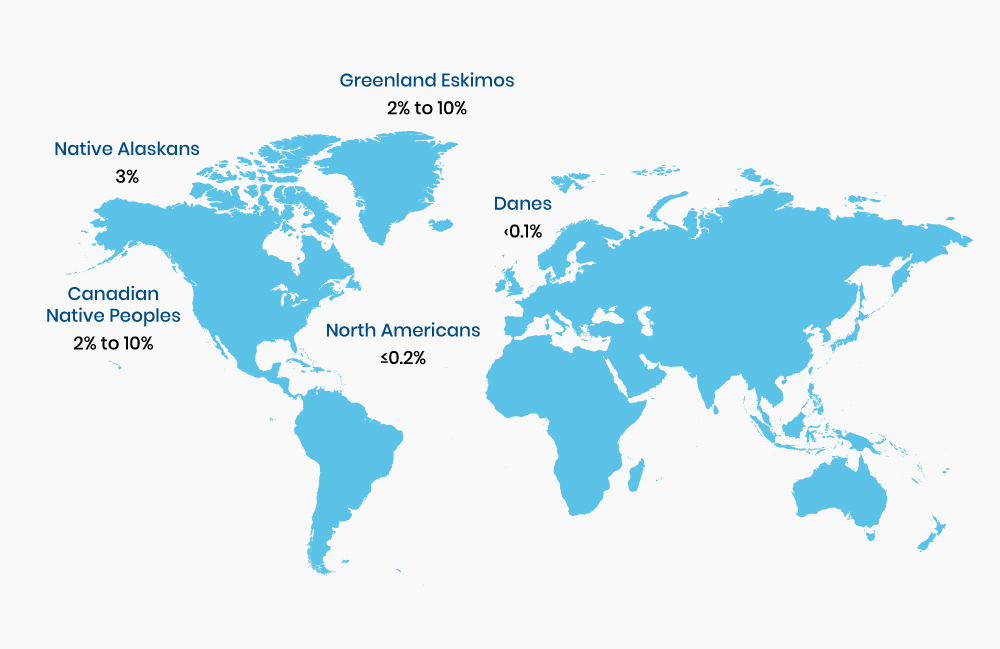Prevalence
How Common is Congenital Sucrase-Isomaltase Deficiency?
In one study, the prevalence of individuals with a sucrase activity level below the lower limit of the normal population was estimated to be as high as 8.9% in the United States.1
In This Section
In a much more recent retrospective survey of nearly 30,000 American cases of mucosal biopsy samples collected during pediatric endoscopies and evaluated using a disaccharidase assay, 9.3% of the samples demonstrated a sucrase deficiency.3
There is wide phenotypic heterogeneity among CSID patients, with a broad spectrum of symptom severity, ranging from absent or minimal to life-threatening. The symptoms of CSID are also nonspecific and often mirror those of other, more common, gastrointestinal (GI) disorders. As such, it is likely that the true prevalence of CSID may be underestimated. Numerous patients who experience chronic diarrhea and/or abdominal pain as a result of CSID may remain undiagnosed.

Figure 1. Estimated prevalence of CSID in various ethnic populations1
References
- Treem WR. Congenital Sucrase-Isomaltase Deficiency. J Pediatr Gastroenterol Nutr. 1995;21(1):1-14. doi:10.1097/00005176-199507000-00001
- Treem WR. Clinical aspects and treatment Congenital Sucrase-Isomaltase Deficiency. J Pediatr Gastroenterol Nutr. 2012;55(suppl 2):S7-S13. doi:10.1097/01.mpg.0000421401.57633.9
- Nichols BL, Adams B, Roach CM, Ma CX, Baker SS. Frequency of sucrase deficiency in mucosal biopsies. J Pediatr Gastroenterol Nutr. 2012;55(suppl 2):S28-S30. doi:10.1097/01.mpg.0000421405.42386.64



